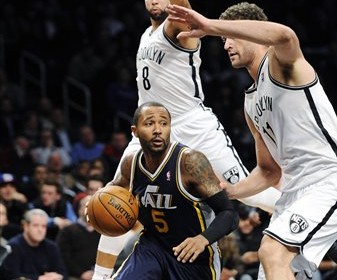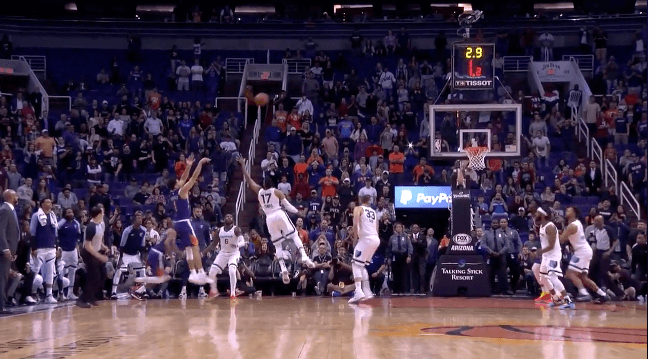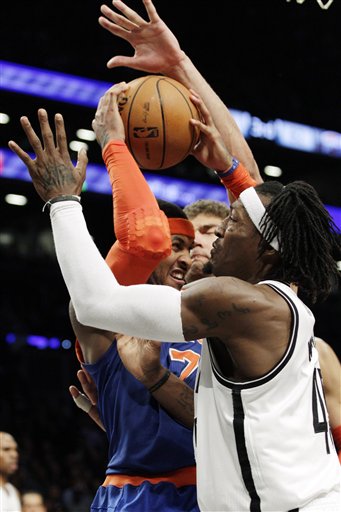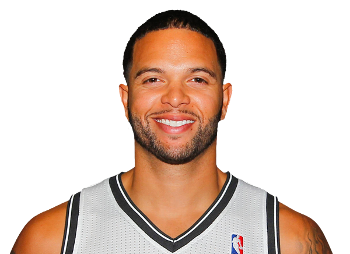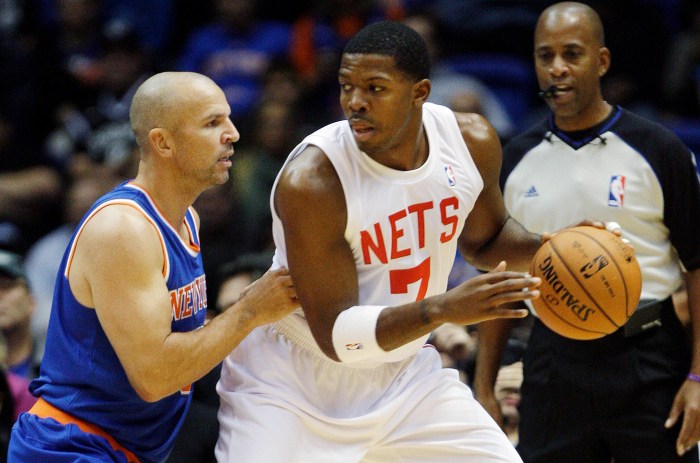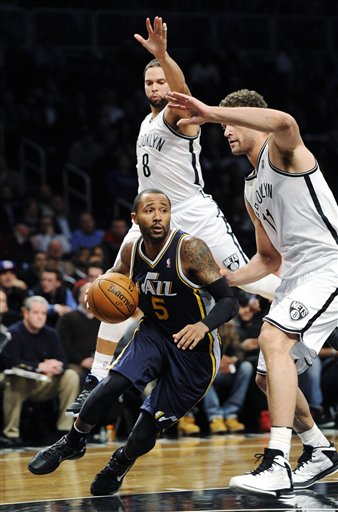 Entering the season with a fresh four-year contract worth $61.8 million, Brook Lopez was not averse to criticism. His rebounding had been on a steady decline since his second season, falling as low as league average for all players — never mind centers — in his last full season. He’d anchored a defense rated in the bottom 10 in each of his full seasons.
Entering the season with a fresh four-year contract worth $61.8 million, Brook Lopez was not averse to criticism. His rebounding had been on a steady decline since his second season, falling as low as league average for all players — never mind centers — in his last full season. He’d anchored a defense rated in the bottom 10 in each of his full seasons.
But we’ve seen a different Brook Lopez this year, a Brook Lopez that’s made a leap from “rightful basketball pundit punchline” to patently average rebounding & defending — maybe, if I dare say so, slightly above average on the defensive end.
Brook Lopez’s energy, and what he calls his “aggressiveness,” has altered his defensive impact considerably. After years of covering pick-and-rolls by hanging back and waiting for the ballhandler to make a decision, I commented after Brooklyn’s opening night game against Toronto that Lopez was cutting off the ballhandler at his point of attack like never before. Even when guards turn the corner against Lopez, he no longer gives up as in past years, instead staying low in his defensive stance and chasing them away from the basket. In 118 plays defending the pick-and-roll ballhandler this season, Lopez has allowed just 83 points, ranking him eighth in points per possession among big men who have defended ballhandlers at least 60 times this season.
Lopez has finally begun to use his length to his advantage on a possession-by-possession basis. Firstly, he’s blocking a career-high 6.2% of all shots when he’s on the floor, good for sixth in the NBA. When he’s not blocking shots, Lopez is altering looks all over the floor, and the numbers reflect it.
With Lopez off the floor, the Nets allow opponents to score 16.8 field goals per 36 minutes from within five feet, at a 59% clip, well above the league average. But with Lopez on the court, those numbers change drastically — just 14.1 field goals per 36 minutes, with opponents shooting 52.1% from within five feet. To put this in perspective, a team that allows 52.1% shooting from within five feet would be the best in the NBA.
The same is true when you extend the floor; teams shoot 43% from the short midrange area with Lopez off the floor, and just 35.7% when he’s occupying the paint — a number that would rank seventh in the NBA.
This isn’t to say that Brook Lopez’s defensive impact has suddenly gone from “one of the least effective big men in the NBA” to a stalwart of Tyson Chandler proportions. The team’s biggest weakness with Lopez on the floor defensively is ending the possession with a defensive rebound: no rotation player, guard or big man, has a bigger negative impact on the team’s overall defensive rebounding numbers than Lopez. Part of this is due to his backups — Andray Blatche & Reggie Evans are the two players most commonly in when Lopez is not, and those are the team’s two best rebounders — but the Nets allow opponents to grab almost 31% of available offensive rebounds with Lopez on the floor, an unacceptably high number. (No other Nets rotation player is over 30%.)
Lopez has also given up more than his fair share of rebounds simply by bringing the ball down and cradling it in his arms, rather than holding it high above his head with his elbows extended. When you’re 7’2″, bringing the ball low is welcoming guards and big men with quick hands to swipe it out of your grasp.
But even with those issues — and for what it’s worth, Lopez has strung together three consecutive double-digit rebound games, and his rebound rate is higher than it’s been since his rookie year — this adds up to an impactful Brook Lopez: Lopez ranks in the top 8% of all players defensively according to Synergy, and the Nets defense improves by 3.6 points per 100 possessions with him on the floor, allowing just 101.7 points per 100 possessions with Lopez anchoring the paint. Of all rotation players, only Reggie Evans has a bigger positive impact on the defensive end.
In Brook Lopez, the Nets have an incredible offensive player, and even his staunchest of critics will agree on that point. But it’s his defense that’s impressed me beyond expectations so far this season — in aggressiveness and in impact. He may never be Tyson Chandler, but he’s starting to become equal parts soft touch and mean streak.
Statistical support provided by NBA.com and Synergy Sports Technology.

